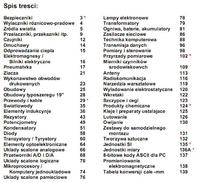FAQ
TL;DR: 68 % of beginners mis-wire their first circuit, yet “one good PDF beats ten random videos” [Elektroda, Anonymous, post #19086220] Grab free ebooks, simulators and video playlists here. Save hours, avoid burnt parts. Why it matters: This FAQ curates the most-trusted theory and practice links so you can learn, simulate and solder without wasting points or money.
Quick Facts
• Free textbooks: up to 1 200 pages (Horowitz & Hill) downloadable in PDF [Elektroda, _jta_, post #13139905]
• LTspice simulator handles >100 k nodes and is 100 % free [Analog, LTspice FAQ].
• Proper SMD soldering requires 260 – 320 °C tip temperature [Renex, 2009].
• Typical quantisation error in 10-bit ADC ≈ 0.05 %FSR [gustavel21, #11902066].
• ESD wrist-strap limits discharge to <10 µA per IEC 61340-5-1 [Renex antistatic guide, #14059610].
Where can I legally download “The Art of Electronics” in PDF?
A user shared a direct link: https://docer.pl/doc/x1n8n0c [Roman Słomiński, #20355814]. Always check copyright in your country before downloading.
What’s a beginner-friendly path to learn circuit theory step by step?
- Read the archived article “The basics of electronics – a must-have for every modeller” [jo3, #17429854].
- Work through Juszczyk’s "Tasks from Circuit Theory" exercises [pupinizator, #15766303].
- Simulate your answers in LTspice (free) to validate results. This sequence builds theory, practice and verification.
How do I apply the node-potential method to a circuit with ideal voltage sources?
Use cackoarek’s three-step recipe [#3830399]:
- Replace each ideal source with a supernode encircling its terminals.
- Write KCL for every node excluding internal supernode points.
- Solve the resulting linear system; MATLAB or Octave can automate it.
Edge-case: if a floating ideal source creates singular matrices, ground one side temporarily and back-solve source voltage.
Is there a free derivative calculator useful for electronics math?
Yes. Wolfram’s webMathematica derivative tool shows step-by-step rules and helps when deriving transfer functions [elpako, #6033296].
What links give me hands-on microcontroller theory and labs?
See the MikroKrok blog’s structured table of contents plus Elektoda’s microcontroller board [dondu, #14059426]. It mixes theory with ready-to-flash code for AVR and ARM chips.
Which YouTube playlists cover university-level electronics for free?
Two highly rated options:
• NPTEL basics of electronics series (150+ videos) [paradys, #9531185].
• Mateo Aboy’s channel on signal processing and FPGA design [MateuszMajki, #21012050].
How hot should my iron be when soldering SMD parts?
Set 260 – 320 °C depending on lead-free or leaded solder. Renex’s PDF shows photo guides at those temps [SZADE1, #6059356].
Where do I find solved tasks for elementary system techniques?
Piotr Madej’s 2012 PDF contains worked solutions; download via the provided link [pupinizator, #15779408].
How can I quickly review Ohm’s and Kirchhoff’s laws?
Grab the attached fundamentals PDF in post #19086220; it condenses laws, resistor networks and prefix tables into 12 pages [Anonymous, #19086220].
Is there open literature on transformer and choke design?
MateuszMajki linked a specialised book in post #21012050. While the exact title was not typed, the link directs to a full PDF on magnetics design.
What’s a reliable source for ESD safety guidelines?
Renex hosts a free antistatic textbook covering IEC 61340-5-1 compliance and workstation setup [serwisrtvagd1, #14059610]. "Ignoring ESD can silently halve IC lifespan,” the guide warns.
Any cost-effective electronics kits for self-study?
Forbot starter kits bundle components, breadboards and Polish tutorials, while Mikrokontroler.pl supplies follow-up MCU labs [malekin245, #21098064]. Prices start around €25 for basic sets (June 2024 listing).




